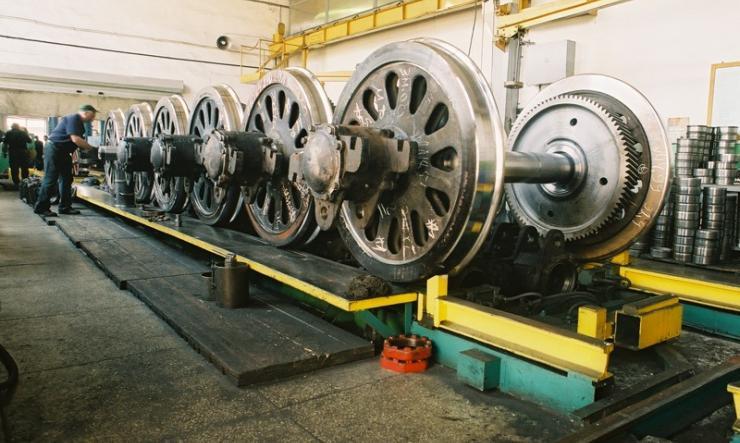Improving the predictability and manageability of the enterprise due to the cost accounting in production Lviv Locomotive Repair Plant

| scale | 1200 employees 360 users | kpi | precise cost planning and minimizing deviation of actual costs from planned ones |
|---|---|---|---|
| Product | Expenses and controlling | Project time | 1 year |
| year of briefcase | 2011 | geography | Ukraine |
| Industry | Mechanical engineering | customer | "Lviv locomotive repair plant" (LLRZ) |
Project Goals
There is a high concentration of repair plants in Ukraine that repair rolling stock. Due to economic reasons, the number of orders began to decline since 2009.
After the situation assessment, the management of the Lviv Locomotive Repair Plant (LLRZ), one of the industry leaders, decided to conduct a business process reengineering project and implement a cost controlling solution.
The implementation team was given an ambitious task:
- in difficult economic conditions and tough competition to ensure profitable work of the plant;
- stay in the market of rolling stock repair;
- to build a direct costs controlling system to minimize deviations of the actual cost of repairs from the planned cost.
The peculiarity of the plant is that a technical condition of electric locomotives that come to repair significantly differs from the planned one. Accordingly, the actual maintenance cost will be significantly different from the planned one for many orders.
On the other hand, the Ukrzaliznytsia enterprise is almost the monopoly customer for the repair and maintenance of a rolling stock. Ukrzaliznytsia sets the repair work prices for one year in advance. In this situation, it is very difficult to properly estimate the planned cost of repairs and remain profitable. To solve this problem, the company implemented an operational managerial cost controlling and cost accounting solution based on IT-Enterprise ERP system.
Project Description
At the time of the project start, the company already had implemented modules of IT-Enterprise ERP system, that covered the tasks of engineering design, production control, logistics management, accounting, HR management and payroll and electronic document workflow.
The market situation required to optimize the costs of a manufacture, which required a clear understanding of the cost structure. Enterprise investors wanted to see a detailed cost analysis for making further financing decisions. So, the company has to control the factors of the cost structure. This would allow to predict the planned performance change when making non-standard managerial decisions.
The company wanted to be able to track the progress of production at the workshop (direct cos - materials and labor resources), so that at any moment they would know the current value of production cost for each repair operation. This allowed to control the benchmark values at the decision-making stage, and not after their implementation, when nothing can be changed.
To make informed decisions, management need information on profitable and unprofitable products. With this information, economists can point out the best way to spend the remaining resources. With information system, they can tell where those resources currently located.
Shift tasks and work orders are formed on the basis of the current position of the maintenance plan (network schedule). Write-off of materials and formation of the work orders in the blank production performed according to the production engineering norms. This solution provides complete control over material and labor costs in production. The actual cost is accumulated as repair progresses for each operation.
Key project factors

Results
Prior to the implementation of operational production costs controlling, plant economists could not accurately determine the cost of the components of the order. There was a mismatch of production accounting and cost accounting, it was impossible to assess the status of work in progress.
After the implementation of the IT-Enterprise system, the company switched from concentration cost accounting to order-based cost accounting. This made it possible to see the current state of each repair object, estimate actual costs, level of work in progress and accurately predict the total costs of materials and labor resources. Due to the fact that the calculation is formed for each operation and transferred along with the calculation when moving parts to the next stage, managers can accurately indicate the current volume of work in progress, its actual production cost and the actual resource location. This solution significantly increased the production processes transparency and increased manageability.
In addition, the system provides extensive analytical tools, that enable various scenarios performance evaluation:
- calculate the cost of another type of repair;
- provide the calculation when the price of materials changes;
- change the nomenclature of materials;
- to drill down material and labor costs for each repair object;
- drop down to the primary accounting document (receipt for the warehouse, etc.) with the drill-down technology.
Increased predictability improved the quality of managerial decisions taken at the plant.